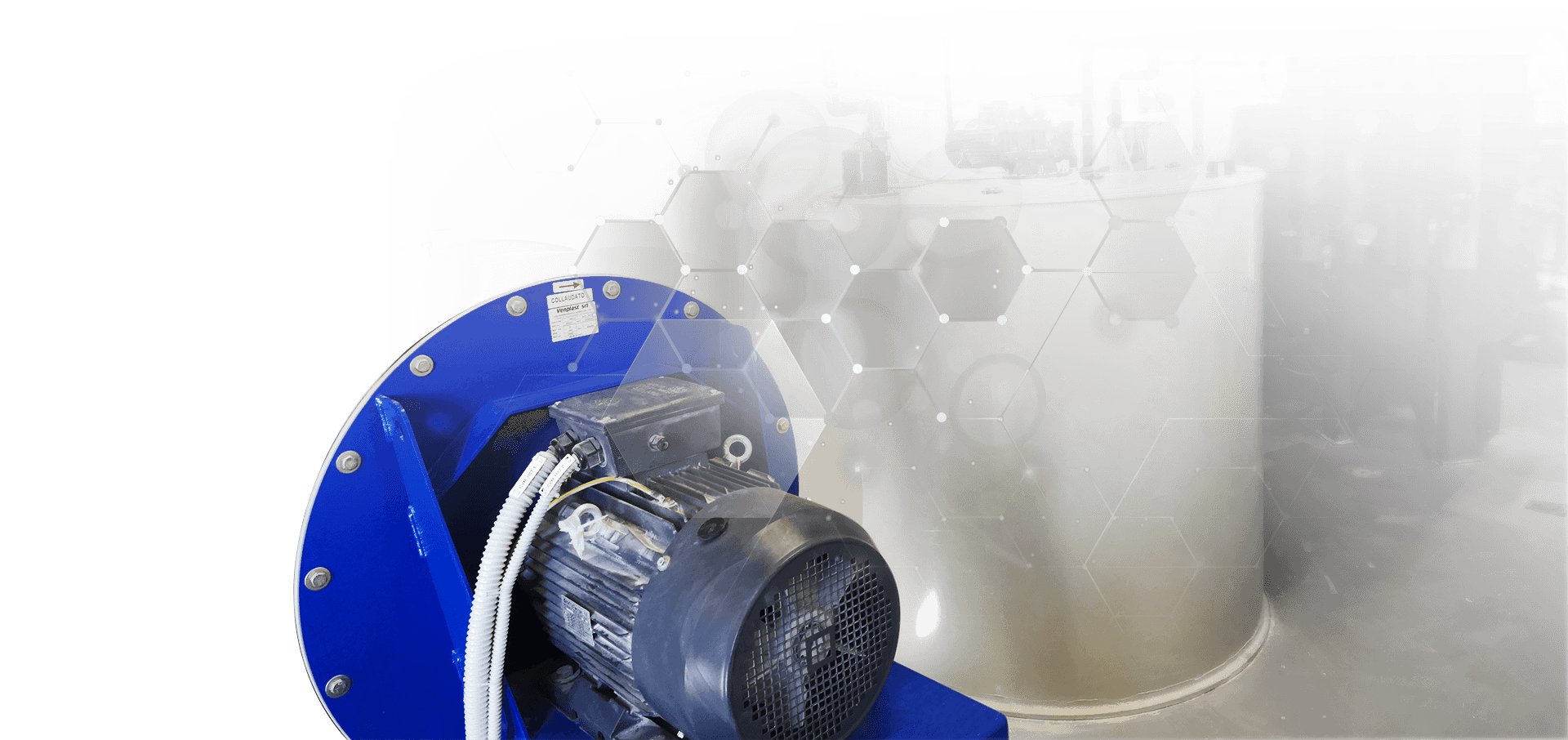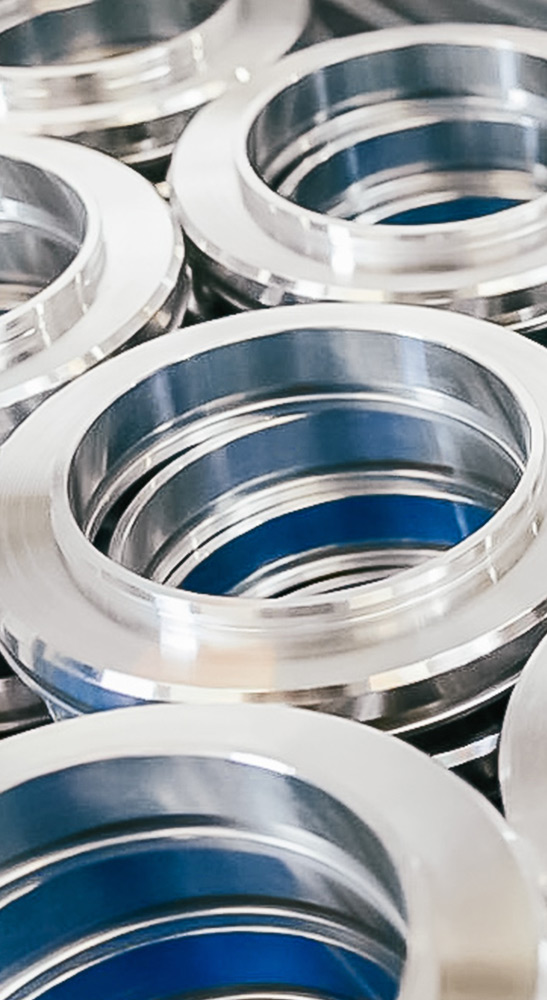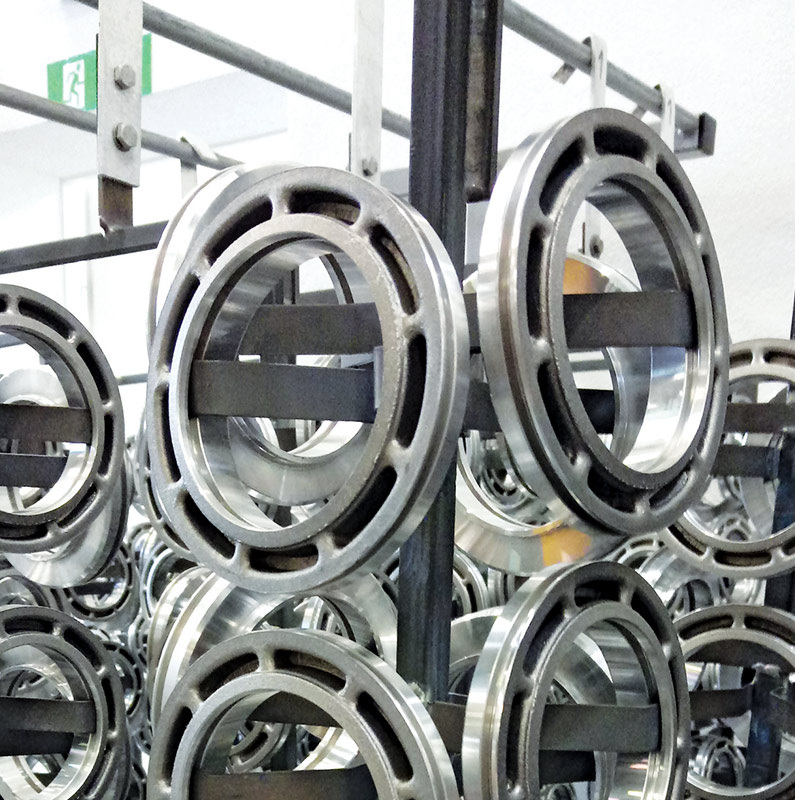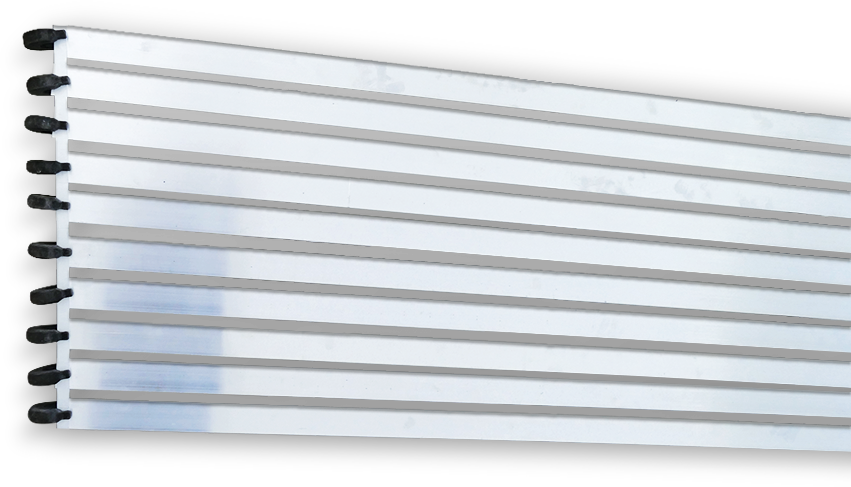Anodization
ANODIC OXIDATION IS AN ELECTROCHEMICAL PROCESS THAT CREATES A LAYER OF ALUMINIUM OXIDE ON THE SURFACE OF PRODUCTS.
An aluminium alloy product is connected as an anode in a sulphuric acid solution, where oxygen is developed during electrolysis to oxidise the base material - aluminium. The negatively connected cathode is also made of aluminium, and hydrogen is emitted at the cathode.
Sulfuric (VI) acid in aqueous solution is used as the electrolyte. The working temperature in the bath is 20 °C and the electrolyte needs to be heat dissipated to ensure uniformity of the coating. The current density for pure aluminium is between 1.4 and 1.6 A/dm2 at 20 °C and 15 V operating voltage, and a layer thickness of 20 μm is formed in one hour at these conditions. Under the same conditions, the voltage or current density for different aluminium alloys is greater or less than that for pure aluminium.

Service
DIMENSIONS OF PIECES SUITABLE FOR ANODISATION:
- Small: 10-20 mm (up to 100 g)
- Medium: 40-300 mm (up to 1000 g)
- Large: 3700-500-1200 mm (profiles, sheet metal and large machine parts - approx. 500 kg)
Pure aluminium and aluminium alloys are suitable for anodisation. Before anodisation, they are degreased (residues of mechanical treatment) or etched (removal of the previous oxide layer) if necessary. The oxide layer deposit depends on the material and the percentage of the alloy elements. The range is between 2 to 30 microns.



